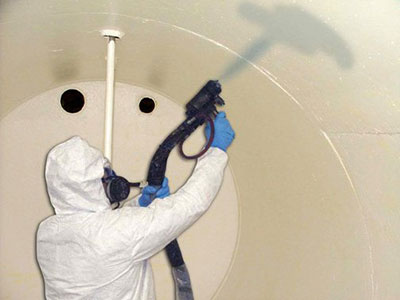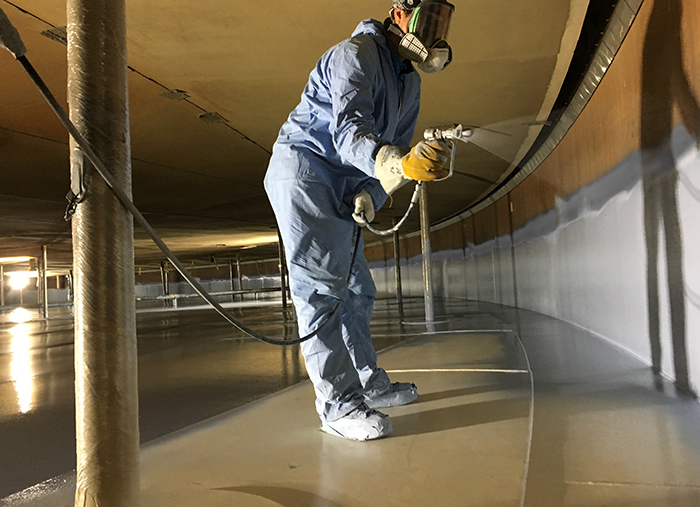Tank coating
What is tank coating?
Tank coating, also known as tank surface treatment, is a process used to extend the lifespan of tanks and ensure that the fuel remains unaffected by issues such as rust. Rust, being a form of particulate matter, contaminates the fuel, acts as an abrasive against mechanical surfaces like diesel pumps, and impacts the overall fuel quality.
Before applying a surface treatment to the interior of tanks, they must first be emptied. Next, the tanks are cleaned internally with an alkaline detergent and thoroughly dried. Once the cleaning is complete, a specialized team performs degreasing procedures before the tanks are sandblasted internally to a standard known as AS2 1/2. After sandblasting, the tanks are cleaned of contaminated sand, which is classified as special waste, before the coating process begins.
Coating can be applied to just the bottom of the tank, one-third of the interior, or any other chosen level. Full coating is recommended for the longest possible lifespan. After coating, the tanks must be allowed to cure, with heaters used to dry the coating product. Coating significantly extends the lifespan of tanks. While the entire process is extensive, time-consuming, and resource-intensive, it is still cost-effective compared to dealing with damaged related components and potential tank replacements, provided the tank wall thickness meets the required standards.

Some of our services:
- Inspection of surface treatment
- Quality control of pre-treatment and completed work
- Quality control of paint and coating application
- Investigation of damage causes
- Independent third-party services in dispute cases
- Guidance on product selection in case of doubt
- We conduct inspections and approval of steel surfaces to be coated, and we also monitor climatic conditions during the work.
- We check the correct blast profile, including the roughness and cleanliness of the steel surface, and ensure that the operator uses the proper application techniques.
Additionally, we check the final result against specified requirements such as:
- correct color and gloss of the topcoat
- correct film thickness of each paint layer, as well as the total thickness
- inspection of paint defects such as pinholes, fish eyes, curtains, and dust/dry spraying
- film thickness, adhesion testing, and pore detection
- requirements for correctly completed final documentation
